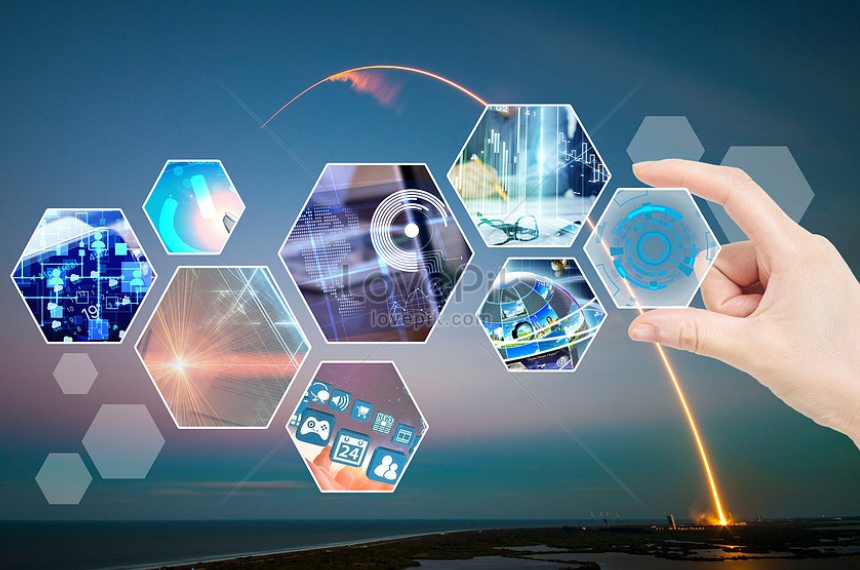Technology
Green Technology Trends Shaping the Future
Green Technology Trends Shaping the Future!
As the world grapples with the challenges of climate change and environmental degradation, the demand for sustainable solutions has never been greater. Green technology, which focuses on reducing environmental impact and promoting sustainability, is at the forefront of this movement. At zgladnews, we are committed to providing the latest in smart home technology that not only enhances your living experience but also contributes to a greener, more sustainable future. In this article, we’ll explore the green technology trends that are shaping the future and how they can make a positive impact on our lives and the planet.

1. The Rise of Renewable Energy Technologies
One of the most significant green technology trends is the rapid advancement and adoption of renewable energy sources. As the world shifts away from fossil fuels, renewable energy technologies such as solar, wind, and hydropower are playing a crucial role in reducing greenhouse gas emissions and providing clean, sustainable energy.
Key Innovations:
- Solar Power: Solar technology has seen significant advancements in recent years, with more efficient solar panels and storage solutions becoming available. Residential solar systems are now more affordable and accessible, allowing homeowners to generate their own clean energy and reduce their reliance on the grid.
- Wind Energy: Wind power continues to grow as a major source of renewable energy, with innovations in turbine design and offshore wind farms increasing efficiency and output. Small-scale wind turbines are also becoming viable for residential use, offering another option for clean energy generation.
- Hydropower: Advances in micro-hydropower systems are making it possible for small communities and individual homes to harness the power of flowing water to generate electricity. These systems are particularly useful in remote or off-grid locations.
Impact on Daily Life:
- By adopting renewable energy technologies, individuals and businesses can significantly reduce their carbon footprint, lower energy costs, and contribute to a more sustainable energy future.
2. Energy Efficiency and Smart Home Technology
Energy efficiency is a cornerstone of green technology, and smart home devices are leading the way in making our homes more energy-efficient. By optimizing energy use, these devices not only help reduce environmental impact but also save money on utility bills.
Key Innovations:
- Smart Thermostats: Devices like the Ecobee SmartThermostat and Nest Learning Thermostat learn your heating and cooling preferences and adjust accordingly, ensuring optimal energy use without sacrificing comfort. They can also detect when you’re away and adjust the temperature to save energy.
- Smart Lighting: LED lighting systems with smart controls allow users to adjust brightness, color, and timing, reducing unnecessary energy consumption. Many smart lighting systems also offer motion detection and daylight sensors to further enhance efficiency.
- Energy Monitoring: Smart plugs and energy monitors provide real-time data on energy consumption, helping homeowners identify areas where they can cut back. This visibility empowers users to make informed decisions about their energy use.
Impact on Daily Life:
- Smart home technology makes it easier than ever to manage energy use, reducing waste and contributing to a greener home. With these devices, you can enjoy the convenience of a smart home while also doing your part for the environment.
3. Sustainable Transportation Solutions
The transportation sector is one of the largest contributors to greenhouse gas emissions, making it a key focus area for green technology. Innovations in electric vehicles (EVs), public transportation, and alternative fuels are paving the way for a more sustainable future in transportation.
Key Innovations:
- Electric Vehicles (EVs): The EV market is rapidly expanding, with more affordable and efficient models becoming available. Advances in battery technology are extending the range of EVs, making them a viable option for more consumers. Additionally, the growing network of EV charging stations is making it easier to travel long distances without relying on fossil fuels.
- Public Transportation: Green technology is also transforming public transportation, with electric buses, trains, and trams reducing the carbon footprint of mass transit. Innovations like hydrogen-powered vehicles and autonomous public transit systems are further enhancing sustainability in this sector.
- Alternative Fuels: Biofuels, hydrogen, and synthetic fuels are being developed as alternatives to traditional fossil fuels. These fuels can power vehicles with lower emissions, providing a bridge to a fully renewable transportation system.
Impact on Daily Life:
- Sustainable transportation options are becoming more accessible, offering consumers the opportunity to reduce their environmental impact while enjoying the benefits of modern, efficient vehicles.
4. Circular Economy and Waste Reduction
The concept of a circular economy, which aims to minimize waste and make the most of resources, is gaining traction as a key component of green technology. This approach focuses on designing products and processes that reduce waste, reuse materials, and recycle end-of-life products.
Key Innovations:
- Recycling and Upcycling: Advances in recycling technology are making it easier to recover valuable materials from waste, reducing the need for raw materials. Upcycling, or creatively reusing waste materials, is also gaining popularity as a way to reduce waste and create new products.
- Sustainable Packaging: Companies are increasingly adopting sustainable packaging solutions, such as biodegradable materials, reusable containers, and minimalistic designs that reduce the environmental impact of packaging.
- Product Design for Longevity: Designing products with durability and repairability in mind reduces the need for frequent replacements, thereby reducing waste. Modular designs that allow for easy upgrades and repairs are becoming more common, particularly in electronics.
Impact on Daily Life:
- Embracing the principles of a circular economy helps consumers reduce waste, conserve resources, and make more sustainable choices in their everyday lives. By supporting products and companies that prioritize sustainability, individuals can play a key role in driving the transition to a circular economy.
5. Green Building and Sustainable Architecture
The construction and operation of buildings account for a significant portion of global energy use and greenhouse gas emissions. Green building practices and sustainable architecture are transforming the way we design and construct buildings, making them more energy-efficient and environmentally friendly.
Key Innovations:
- Energy-Efficient Building Materials: Advances in materials such as insulation, windows, and roofing are improving the energy efficiency of buildings. These materials help reduce energy consumption for heating and cooling, lowering both costs and emissions.
- Passive Design: Passive design techniques, such as optimizing building orientation and using natural ventilation, reduce the need for mechanical heating and cooling. This approach minimizes energy use while maintaining comfortable indoor environments.
- Green Roofs and Walls: Incorporating vegetation into buildings, through green roofs and walls, provides insulation, reduces urban heat islands, and improves air quality. These features also enhance biodiversity in urban areas.
Impact on Daily Life:
- Green buildings not only reduce environmental impact but also improve the quality of life for occupants by creating healthier, more comfortable living spaces. As green building practices become more widespread, more people will be able to enjoy the benefits of sustainable architecture.
6. Sustainable Agriculture and Food Production
Agriculture and food production are critical areas where green technology can make a significant difference. Sustainable practices and technologies are helping to reduce the environmental impact of food production while ensuring a stable and healthy food supply.
Key Innovations:
- Precision Agriculture: Using technology to monitor and optimize farming practices, precision agriculture reduces the use of water, fertilizers, and pesticides, minimizing environmental impact. Drones, sensors, and AI-driven analytics are key tools in this approach.
- Vertical Farming: Vertical farming techniques allow for the cultivation of crops in controlled indoor environments, reducing the need for land and water while increasing yield. These systems are particularly well-suited to urban areas, where space is limited.
- Plant-Based and Lab-Grown Foods: The development of plant-based and lab-grown meat alternatives offers a more sustainable option for consumers, reducing the environmental footprint of traditional livestock farming.
Impact on Daily Life:
- Sustainable agriculture practices ensure that we can continue to produce the food we need while protecting the environment. Consumers can support these practices by choosing sustainably produced foods and reducing food waste in their homes.
Conclusion

Green technology is not just a trend—it’s a necessary shift towards a more sustainable future. From renewable energy and energy-efficient smart home devices to sustainable transportation and green building practices, these innovations are reshaping our world for the better. At zgladnews, we are proud to be part of this movement, offering products that help you live more sustainably without sacrificing comfort or convenience.
As green technology continues to evolve, its impact will only grow, offering new ways to protect the environment and improve our quality of life. By embracing these technologies today, we can help shape a greener, more sustainable future for generations to come.
Explore our range of eco-friendly smart home products at zgladnews and discover how you can make your home smarter and greener.


